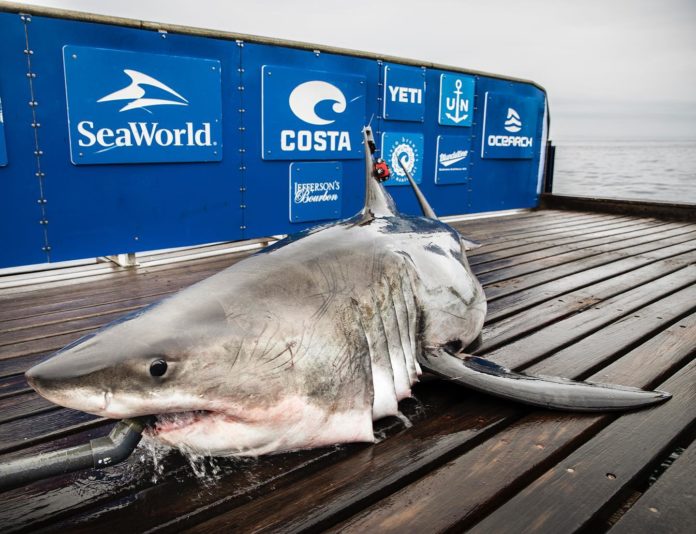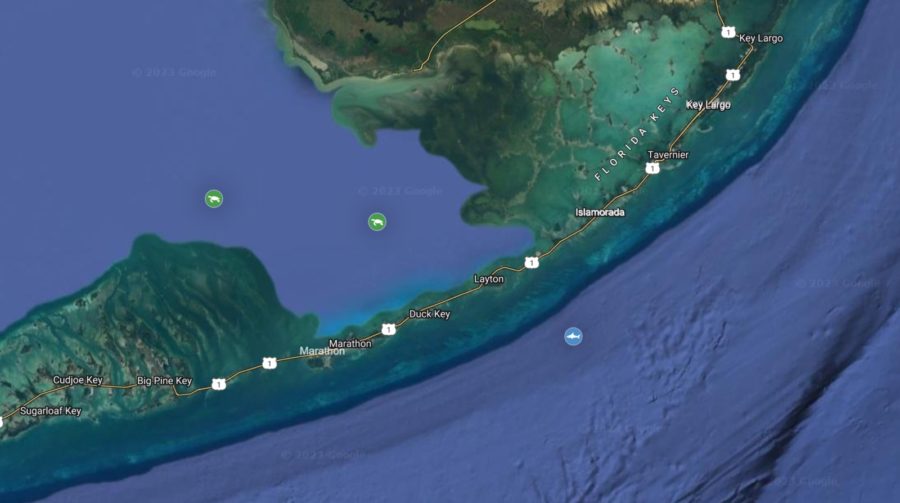
“Sable,” a juvenile Great White Shark, “pinged” in the waters off of Layton on Jan. 3 at 5:26 a.m. Locals and shark enthusiasts are excited.
“How lucky we are!” a Facebook post in the popular “What’s Happening in the Florida Keys” group captioned a picture of Sable along with a screenshot of her latest satellite ping in offshore waters. “Keep an eye out for her approximate 11-foot length and 1,000 pounds,” the poster added, with happy face and shark emojis.
“Nothing says healthy reef like sharks!” another local responded.
White sharks are among some of our favorite “snowbird” species migrating south for the winter. They’re likely circling the Keys on their way to the Gulf. Patrick Rice, chiefs science and research officer at the College of the Florida Keys, previously told the Keys Weekly about how white sharks, like other migratory species, follow the movement of their food.
“These sharks are following tuna and marlins that are going to the Gulf of Mexico to spawn,” he said. “They follow the big migratory species: bluefin tuna, yellowfin tuna and blue marlin.” These are larger pelagic fish that live in the open ocean rather than at the bottom of the sea. Sharks like Sable typically travel offshore, along the edge of the Continental Shelf in water depths over 3,000 feet deep.
OCEARCH, a research group using advanced tracking technology to follow species like sharks, first encountered Sable during a September 2021 expedition in Nova Scotia. Her namesake is Sable Island National Park Reserve, located approximately 180 miles offshore of Halifax, Nova Scotia – near where she was tagged.
Researchers used a hydraulic lift aboard OCEARCH’s research vessel to bring Sable on deck, where they took length and weight measurements as well as blood samples and vital signs. At the time of tagging in September 2021, she measured 10 feet, 6 inches and 807 pounds. Then, the team fitted Sable’s dorsal fin with a smart position or temperature (SPOT) tag, which sends a satellite signal with location information whenever the tag breaks the water’s surface. The ping data then shows up real-time on OCEARCH’s website, which is available to the public.
The tag should last five years and will hopefully provide new data about white shark migrations. Sable was the 76th shark sampled, tagged and released as part of OCEARCH’s Northwest Atlantic White Shark Study.
The highly specialized tracking data pool that groups like OCEARCH are creating help scientists better understand complex seasonal migration patterns.
In 2021, OCEARCH’s chief scientist Robert Hueter noted that Sable likely spends a few months “cruising around Canadian waters” feeding on high energy foods like seals before coming south in the early part of winter.
Before pinging in the Keys this year, Sable sent a signal off Kitty Hawk in North Carolina on Dec. 10, 2022. In previous years, she followed a similar trajectory from Canada down along the coast, around the Keys and into the Gulf of Mexico – making her way through the Gulfstream before going back up north to feed. Researchers observed that she likes these long swims between pings.
“People do not have to worry. People should rejoice that the white sharks are beginning to return,” Hueter said. “Their numbers are beginning to come back up after many years of declines and our worries about the disruption to the marine ecosystem. They’re coming back.”
To follow Sable on her journey, visit OCEARCH’s website: https://www.ocearch.org/tracker/detail/sable.
























